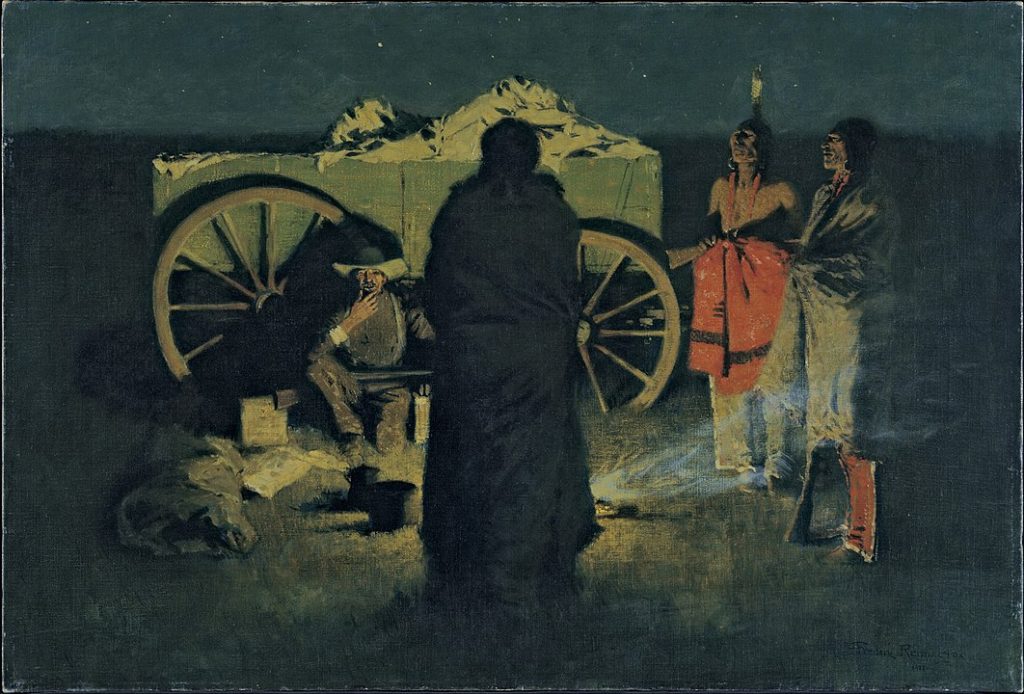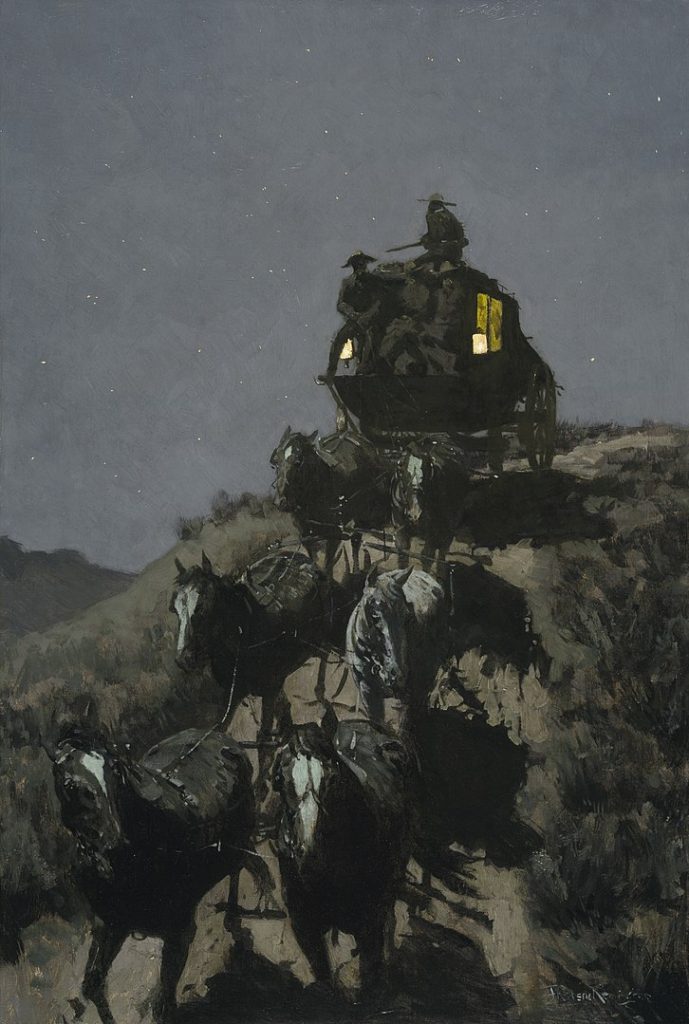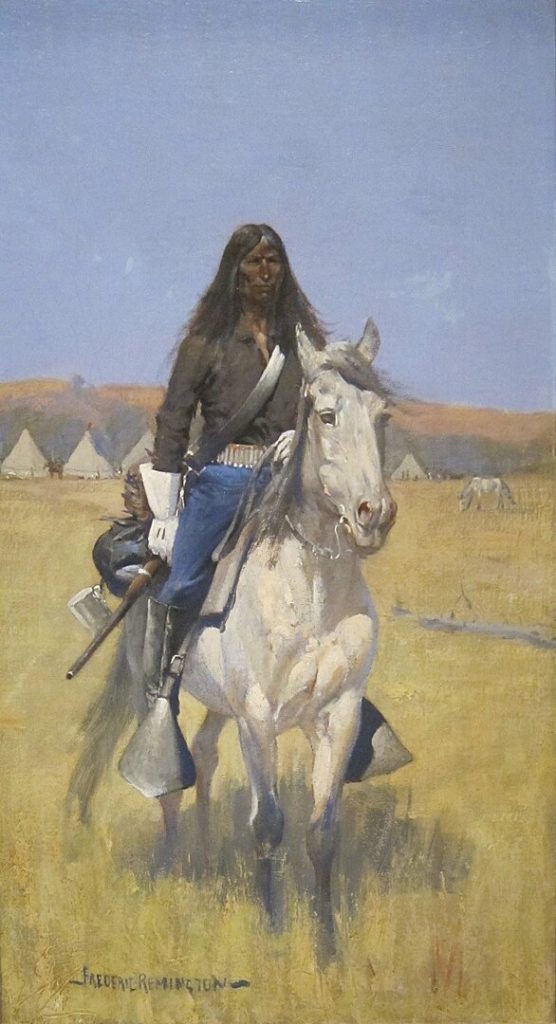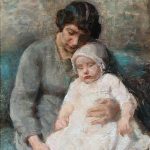
Frederic Remington (1861–1909) was an American artist, illustrator, sculptor, and writer, best known for his depictions of the American West in the late 19th and early 20th centuries. Born on October 4, 1861, in Canton, New York, Remington grew up in an era that romanticized the American frontier and the West.
Remington’s artistic career began as an illustrator, contributing drawings to various publications, including Harper’s Weekly and Collier’s. His illustrations often depicted scenes of the American West, featuring cowboys, Native Americans, and the U.S. Cavalry. These works contributed to shaping the popular image of the West in the public’s imagination.

In addition to his illustrative work, Remington gained fame for his sculptures, which also focused on Western themes. His bronze sculptures, such as “The Bronco Buster” and “Coming Through the Rye,” captured the spirit and action of the American frontier. “The Bronco Buster,” in particular, became one of his most well-known and widely reproduced works.
Remington’s artistic style was characterized by a keen attention to detail and a realistic portrayal of the subjects. His fascination with the West and its inhabitants was not just an artistic pursuit but also reflected his admiration for the rugged individualism and frontier spirit of the people who lived in that era.

Despite his success, Frederic Remington faced financial difficulties at times, prompting him to explore various business ventures to supplement his income. He also wrote and illustrated articles about his experiences in the West, contributing to the popular understanding of frontier life.
Frederic Remington’s career was tragically cut short when he died of complications from appendicitis on December 26, 1909, at the age of 48. His legacy, however, lives on through his art, which continues to be celebrated for its portrayal of the American West and its lasting impact on the cultural perception of that era. Today, his works are housed in major museums and collections, preserving his contribution to American art and the documentation of the West during a transformative period in the nation’s history.





